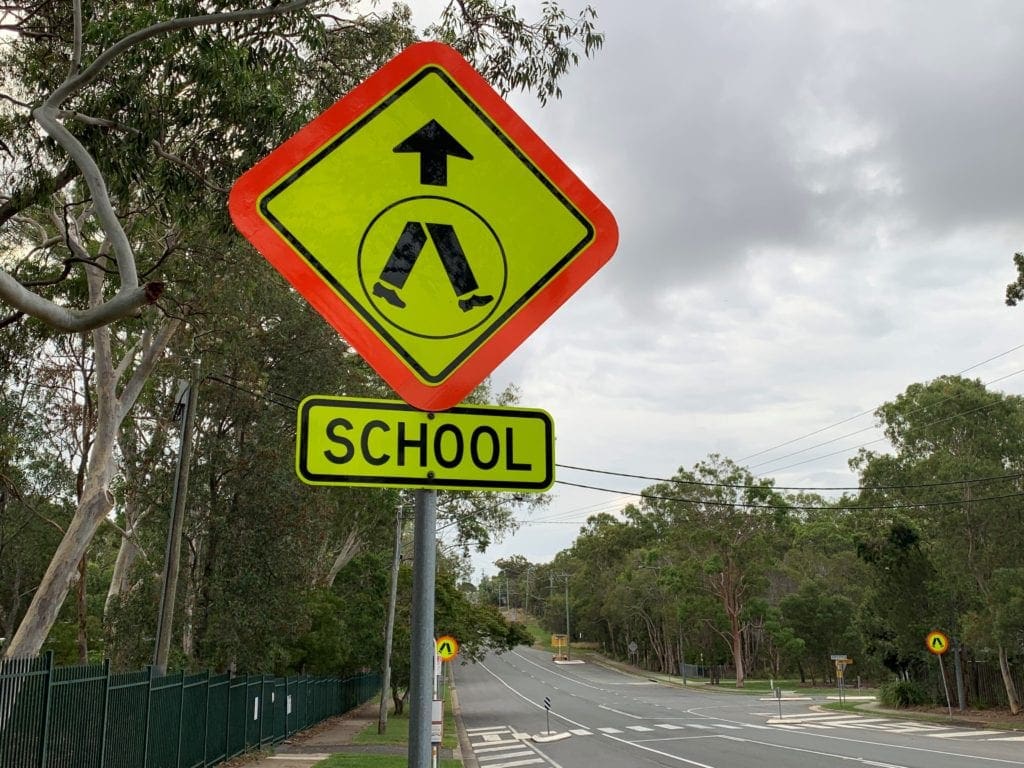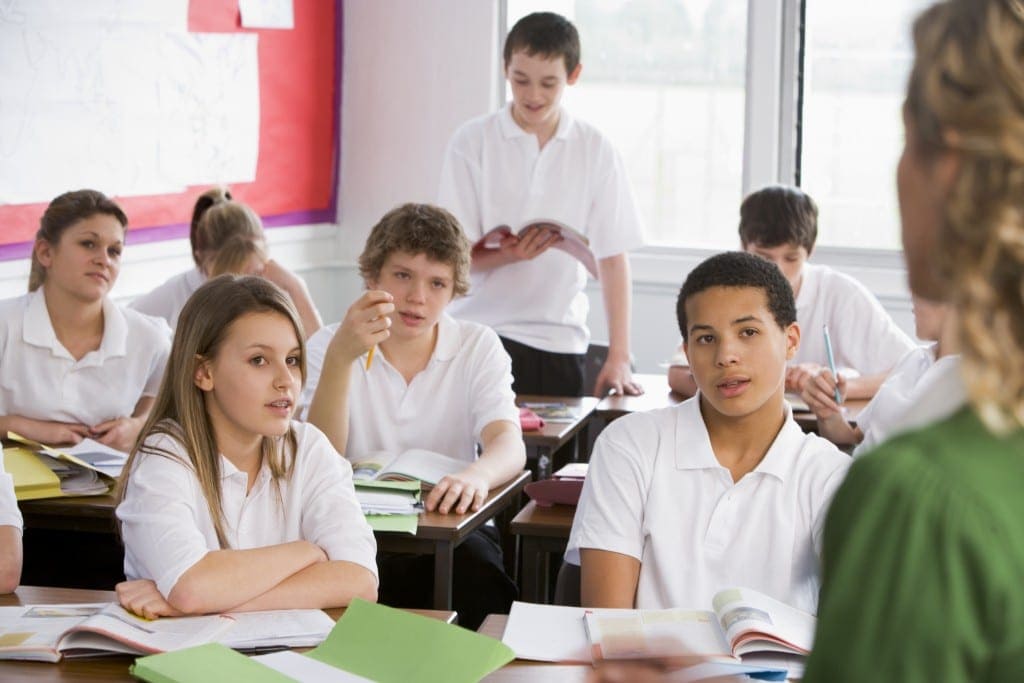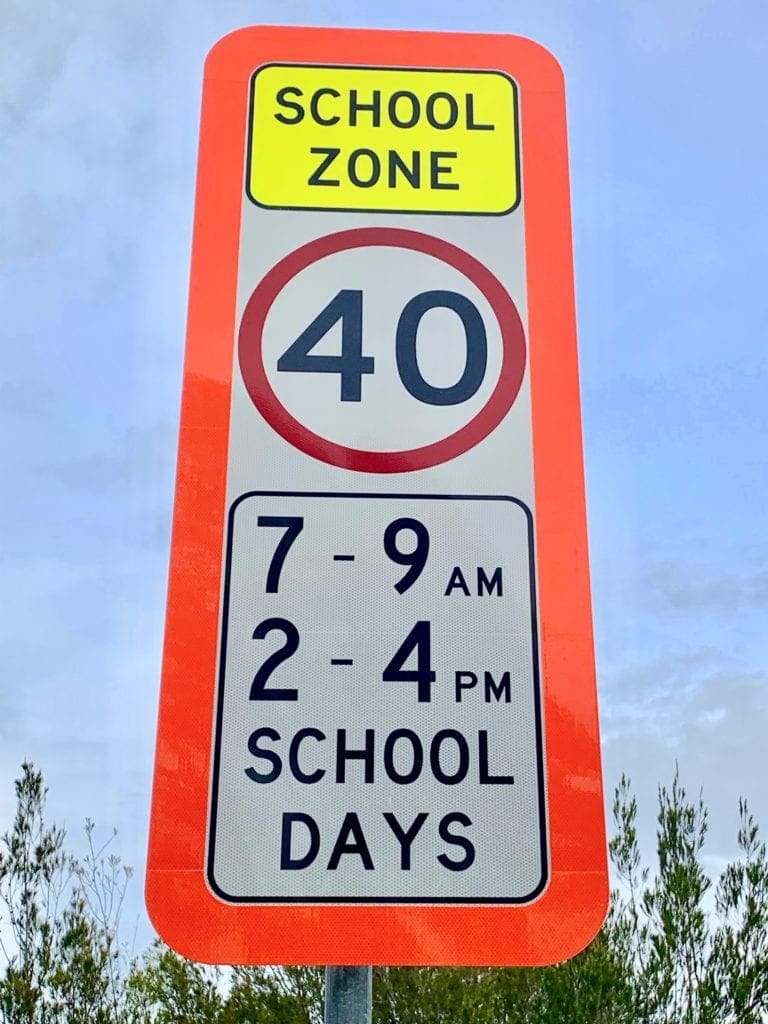With increasing traffic volume, school enrolments at capacity, and just the general morning rush, navigating the school zone at drop-off and pick-up can be a hazard that even Indiana Jones would shy from. Knowing the school zone safety rules and having a few tricks up your sleeve can help.
School zones – the rules
School zones are installed to reduce traffic speed near schools during the times indicated in the school zone sign. They are identified by signs which are displayed on both approaches to the school and show the speed limit and the times during which it applies. School zone times have been standardised in Queensland to help motorists remember when to slow down. The standard operating times for school zones in the Brisbane and greater Brisbane area is 7–9am and 2–4pm, with split-campus schools (on opposite sides of a road) running from 7am–4pm.
When driving through a school zone you must reduce your speed to the limit displayed – usually 40kph – or lower if conditions require.
Fines apply for exceeding the speed limit in a school zone within its designated times.
Why do we have school zones?
Children are at risk around school areas because they are small, can’t be easily seen by drivers, are more prone to running, have difficulty judging vehicle speeds and gaps, and have poorer perceptive skills than adults.
School zones are designed to alert drivers to the presence of children and to allow children safe access to the school’s grounds.
School zone safety – tips for motorists

School zones are very busy areas and drivers can easily become distracted. Parking spots are hotly contested, and when traffic is bumper-to-bumper, manoeuvring into a newly vacated space can be tricky. Remember to SLOW down:
S – Slow your speed; things can change quickly in a school zone and you need to be ready to react
L – Look for hazards; the child who has let go of Mum’s hand and is running to greet friends
O – Observe the rules; don’t stop in a no-standing zone or block a crossing etc.
W – Wait; be patient – you know that you’ll soon be on your way again, and impatience creates its own hazards.
School zone safety – tips for parents and caregivers

Set a good example
It’s tempting as a grown-up to cut through queued traffic and dash through gaps to cross the road, but your child isn’t capable of making the same judgement calls. Model ‘safety-first’ behaviour by always crossing at designated crossing places and following the directions of the crossing patrol personnel.
Crossing rules
If there is no designated crossing patrol, show your child how to choose a safe place to cross and practice the rules – Stop! Look! Listen! Think!
- Stop! One step back from the kerb and away from parked vehicles. Make sure you have a clear view of the road
- Look! Continuously look both ways for approaching traffic
- Listen! For approaching vehicles
- Think! Is it safe to cross? If the road is clear in both directions and there is no traffic approaching, cross carefully while continuing to look left and right and listen for traffic until you safely reach the other side.
Plan your approach
You can avoid the need to cross the road entirely by approaching the school from the other direction. A detour around the block might add a few minutes to your day, but you’ll have easier access to safe drop-off points.
The ‘safe side’
When pulling into a drop-off zone or parking space, make sure your children get out of the car on the ‘safe side’ – that’s the side nearest the footpath, not into the road.
Kiss and Go
It’s just that! The drop-off zone – or Kiss and Go – is designed to keep traffic flowing. It’s not the place to pull over for a chat with other parents and teachers, or to quickly jump out and run your child over to the gate. For the sake of those waiting their turn behind you, make sure your child has their bag close by and is ready to exit the car as soon as it’s your turn.
Teach awareness
If your child travels to school independently, teach them to be aware of their environment. Wearing headphones, for example, can be distracting and prevent your child from hearing oncoming traffic or warnings.
If your child has to walk through a car park, make sure they are alert for reversing vehicles. Drivers in car parks can often be more focussed on finding a spot than on spotting pedestrians.
Cross the road
When collecting your child at the end of the school day, always meet them on the school side of the road. Calling out to your child from across the road may cause them to run into the traffic to meet you.
Make a plan
Plan ahead and tell your child exactly where you will be waiting for them at the end of the day, and what they should do if you are running late, i.e. to wait with a teacher or in the school office until they can be collected.
Practice school zone safety
Back-to-school is a bustling time, and if your child is just starting prep or is transitioning to a new school, it may take a little practice to get to know the layout and routine of your school zone. Make a trial run before the school term begins to get an idea of the normal traffic volume at drop-off and pick-up times, and factor in an additional time allowance for the increased volume on school days. Make sure to take note of where the school zone begins and ends, road signs and markings, available parking and potential hazards, and plan for a safe and organised school run.
Want to know more about school safety? Check out our article on school lockdowns and what they are.
Bisbane school catchment areas refer to the geographical location, determined by specific boundaries, where the majority of enrolled state school students must live to attend that school.
Every Queensland student, from Prep to Year 12, will find that they are automatically within a specific Brisbane school catchment zone for a particular state school. Here’s what you need to know about finding your state primary or state secondary school catchment Brisbane area.
Why do we have Brisbane school catchment areas?
Brisbane state primary and Brisbane state high school catchment areas are in place so each child is guaranteed a place at a local state school. State primary schools and state high schools will each have their own individual catchment areas that may overlap.
School catchment areas in Brisbane can also ensure that equitable amounts of government funding are sent to the right places. That ensures that the area will be adequately serviced by school buses and that appropriate safety measures, like school crossings and guards, are correctly distributed. Brisbane high school catchment areas need to have their resources matched to their student populations needs.
As your child will automatically be enrolled in your local state school all you will need to do to confirm your interest is to fill out an application form and provide proof of residency. This might mean you show a rates notice, a tenancy agreement or bills that demonstrate you are the property occupier within the zone boundaries. You may own your property or you may rent in that Brisbane state school catchment zone.
Catchments and zones can change

When new schools open, catchments are adjusted to form a new equidistant boundary with the old school. If your child is already enrolled at a school before the boundary changes you do not have to switch schools unless you choose to. Younger siblings can also generally enrol at the same school as their older siblings provided they remain living within the school’s former catchment.
Because catchments can change, it is a good idea to check yours periodically (particularly if you are in an area that has new schools being built) to see if you are affected. Brisbane primary school catchments as well as secondary school catchments in Brisbane are currently being affected by the building of new schools! Visit the ‘Building Future Schools,’This website shows new schools being built across Brisbane so you can check to see if you are affected by the upcoming changes.
New Brisbane state schools opened 2020
- Fortitude Valley State Secondary School – opened to Year 7 students
- Yarrabilba State Secondary College – opened to Years 7 & 8
- Foxwell State Secondary College, Coomera – opened to Year 7 students
- Mango Hill State Secondary College – opened to Years 7 & 8
- Ripley Valley State School – opened for prep to Year 6
- Ripley Valley State Secondary School – opened to Years 7 & 8
New Brisbane state schools opening 2021
- Inner City South State Secondary College, Dutton Park – opening to Year 7 students
What if I don’t like my Brisbane state high school catchment area?
It is possible to enrol your child at a state school outside of your designated school catchment area. However, you will be put on a wait list to ensure that local children get places first. If this is your situation, we recommend you get your application in sooner rather than later so you are towards the top of the waiting list.
You might secure enrolment if:
- You apply early
- All students who live in that catchment area are catered for
- All classes at the school have an even spread of students
- Non-catchment students won’t negatively impact the educational outcomes of the catchment students
How to find your school catchment area
This Department of Education and Training has a Brisbane school catchment map that will allow you to scroll over school catchment zones until you find your street. Primary and secondary school catchments are different and are shown in different colours. Be aware that primary school catchments are much smaller than high school ones.
You can enter your address and find out the exact state primary and state high school that your housing is zoned into here.
Helpful links related to choosing a school
School open days across Brisbane
How to get a scholarship to a private school in Brisbane
Secondary school ranking (with links to primary school ranking)
How to apply to change schools
This article was featured in Issue 38 of our printed magazine, published February 2020. Schools are welcome to share this link in their newsletters!

